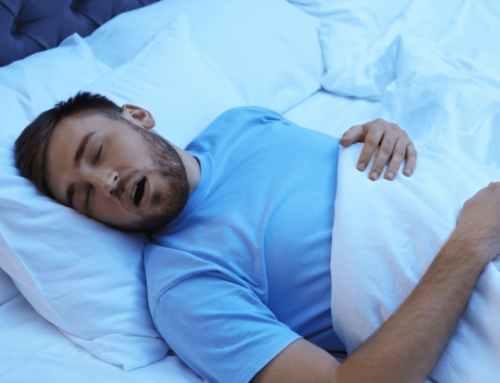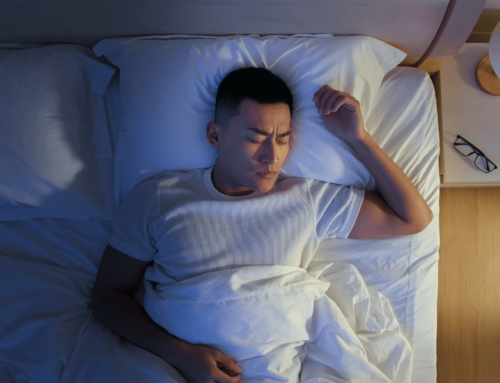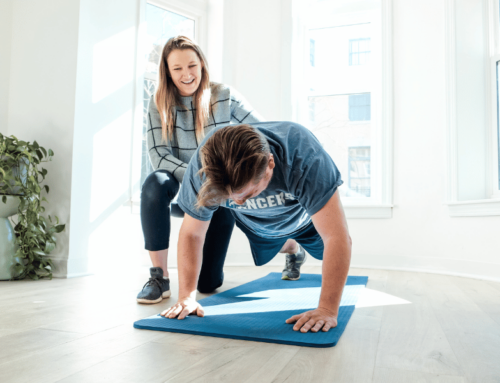Living with Postural Orthostatic Tachycardia Syndrome (POTS) can often feel like an uphill battle. Just standing up can trigger a wave of dizziness, overwhelming fatigue, or a racing heart. These symptoms can significantly impact daily life, making even seemingly simple tasks feel challenging. You might get advice from your physician or research online saying you need to exercise to help with your symptoms, but how the heck are you supposed to do that when you struggle to move?
Physical therapy offers a structured and guided approach to managing these symptoms. It focuses on strategies to improve your body’s response to upright positions and enhance your overall functional capacity.
Keep reading to learn how to get back to not only the things you HAVE to do but also the things you LOVE to do!
Understanding POTS
First, a quick overview: POTS is a disorder of the autonomic nervous system. This system is responsible for many of your body’s automatic functions, like heart rate, blood pressure, digestion, and breathing.
For someone with POTS, when they stand up, their heart rate increases way more than it needs to and the body struggles to maintain stable circulation in an upright position.
POTS is diagnosed when there is a sustained heart rate increase of at least 30 beats per minute within 10 minutes of standing or head-up tilt (1).
This can lead to a range of symptoms, including:
- Dizziness or lightheadedness when standing
- Fainting or feeling close to fainting
- A rapid heart rate (tachycardia)
- Significant fatigue
- “Brain fog” or difficulty concentrating
- Nausea
- Tremors
- Digestive problems
- Shortness of breath
The cumulative impact of these symptoms can be substantial on an individual’s daily life.
It has also been proposed that Ehlers-Danlos Syndrome (EDS), a connective tissue disorder, is found in some POTS patients (2). This syndrome tends to occur with POTS due to the abnormal connective tissue development in dependent blood vessels which allow excessive amounts of blood to pool in the lower limbs when they stand.
When a healthy individual stands up, gravity causes about 10-15% of their blood to settle in the abdomen, legs, and arms. This pooling of blood means that less blood reaches the brain, the result of which can be a feeling of lightheadedness, seeing stars, darkening of vision, or even fainting.
For most people, this lightheaded feeling is infrequent when we stand up because the leg muscles help pump blood back up to the heart, and because the body turns on a series of rapid reflex responses. To make up for the lower amount of blood returning to the heart immediately after standing, the body releases norepinephrine and epinephrine (also known as adrenaline).
These substances typically cause the heart to beat a little faster and with more force (a familiar feeling after we exercise or are frightened), and norepinephrine causes the blood vessels to tighten or constrict. The end result is more blood returning to the heart and brain.
When people with POTS are upright, they appear to pool a larger amount of blood in vessels below the heart. For the person with POTS, the longer they remain upright, the greater the proportion of their blood that settles in their abdomen and limbs. The body responds by releasing more norepinephrine or epinephrine, in an attempt to cause more constriction of the blood vessels, causing a significantly increased heart rate response (1).
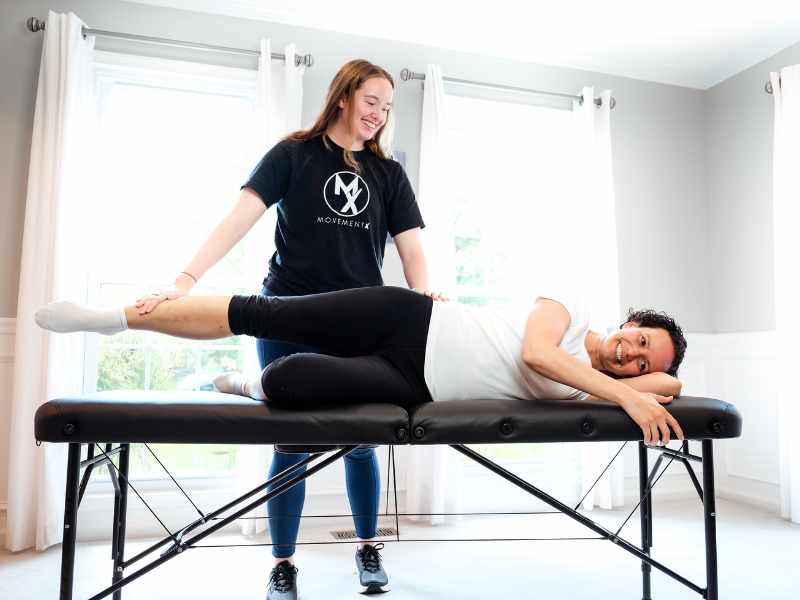
How Physical Therapy Can Help
It might seem counterintuitive to exercise when simply standing (or even just existing) is exhausting. However, a carefully designed and supervised physical therapy program works by gradually training your body to better handle the demands of gravity. Here’s how it helps:
Enhancing Muscle “Pump” Function
Your calf muscles, along with those in your core and glutes, play an important role in helping pump blood back to your heart when you’re upright. Strengthening these muscles can improve venous return, meaning more blood gets back to your heart and brain, which can help reduce some orthostatic symptoms.
That term (orthostatic) might be a bit unfamiliar, and that’s okay! Part of learning about your body with a physical therapist is realizing that there are really specific terms to describe your experience.
In plain English, orthostatic essentially means relating to standing upright. It’s frequently used in the context of how the body reacts to the change in position from lying down or sitting to standing. Sound familiar now? You’ve got this!
Improving Upright Tolerance
Physical therapists use specific exercises and a progressive approach to help your body adapt to standing and other upright activities (that orthostatic thing we just talked about). This often begins with exercises performed while lying down or seated, gradually advancing to more upright movements as your tolerance improves. This method helps your cardiovascular system become more efficient when you change positions. I’ll dive into more specifics in the “What to Expect” section.
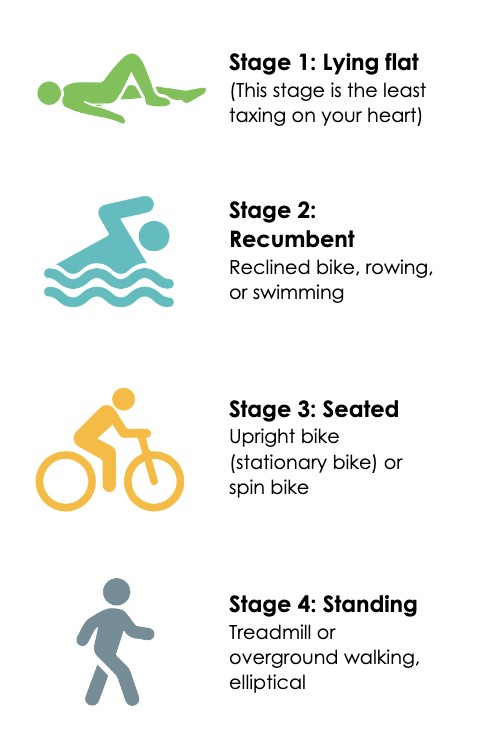
Building Cardiovascular Fitness (Gradually)
One of the most challenging symptoms of POTS is fatigue. A structured physical therapy program helps you gradually build endurance, which can lead to increased energy for daily activities and a reduction in overall exhaustion.
These exercises help improve overall cardiovascular conditioning without overtaxing your system, supporting more effective blood circulation. This process is unique to each person since everyone’s system reacts differently, so it’s important to work with your physical therapist to figure out what works best for your body.
Supporting Nervous System Regulation
Consistent and appropriate physical activity can contribute to a more balanced state within the nervous system over time, potentially reducing an overactive “fight or flight” response often seen in POTS.
The ability to more effectively switch between the sympathetic and parasympathetic nervous systems can help your body react to stimuli more appropriately, upregulating when it needs to and downregulating when it needs to.
Gentle movements and stretches can indirectly support vagal tone by promoting relaxation and reducing physical tension that might keep your sympathetic system on edge. Specific breathing exercises, such as diaphragmatic breathing and physiological sigh, may be incorporated to support nervous system regulation. Deep, slow exhale directly stimulates the vagus nerve, helping to lower heart rate and calm your system (4).
Providing Self-Management Strategies
Beyond exercises, your physical therapist will educate you on important self-management techniques. This includes learning about proper pacing of activities, recognizing your body’s signals, optimizing hydration, and modifying tasks to conserve energy throughout the day. It also includes collaborating with your physician to make sure your medications are working properly.
What to Expect
Okay, so you know what POTS is, you know how physical therapy can help, and now you’re asking yourself “should I schedule an evaluation?” and “what does that entail?” Your physical therapy plan for POTS will be personalized to your specific symptoms and capabilities. Generally, you can expect:
Comprehensive Assessment
Your therapist will conduct a detailed evaluation of your symptoms, medical history, current exercise tolerance, and any functional limitations you experience. Range of motion, strength, balance, and motor control will be assessed to get your current baseline and help establish goals.
Gradual Progression
Exercises will be introduced gently and progress at a very slow, controlled pace, always respecting your body’s responses and symptom levels. The best types of exercise programs include aerobic/cardiovascular and strength training.
Common starting activities include exercises performed in lying or seated positions such as bridges, leg raises, clamshells, dead bug, seated marching, leg extensions, ball squeezes, calf raises, etc. Recumbent biking, swimming, and rowing are all good supported cardio options to start with as well – pick which one you like the best.
Upright activities will be introduced carefully as your tolerance allows and can progress to walking, squatting, lunging, lifting, and sometimes even running if that’s something you want to get back to!
The American Heart Association (AHA) recommends 150 minutes per week (30 minutes, 5 days a week) of moderate-intensity aerobic exercise to maintain long-term cardiovascular health. For someone with POTS, this may sound very overwhelming – you don’t have to start there! Something is better than nothing and there are several guidelines available for exercising with POTS including The Levine Protocol, CHOP protocol, and Utah ADaPT. Your physical therapist will likely use something like these protocols as an outline to tailor your plan specifically to you based on what they found in the initial evaluation!
Typically, progression through the stages of these protocols looks for an appropriate increase in heart rate and rating of perceived exertion sustained for 20 minutes 3-4 days a week without an increase in symptoms (5). Your therapist will work with you to figure out when to progress, when to modify, and what to do if you miss a few days (we are human after all)!
Strategies
You’ll learn pacing strategies for managing your energy levels throughout the day to help prevent symptom flares and maintain activity. Proper hydration and salt intake, as well as compression garments, can help support proper blood flow. Your physical therapist will guide you on the right strategies for you, especially if you’re also taking medications that can affect your heart rate response to activity.
Home Exercise Program
Physical therapy sessions are not a magic wand (wouldn’t that be nice?!) so the biggest part of this is what you do on the other days. You will receive exercises and guidance to continue your progress between therapy sessions. This way, you can also provide feedback to your physical therapist about what is working well and what needs to be modified – this is a partnership!
If you’re experiencing POTS symptoms, partnering with a POTS-informed physical therapist can be a huge help, providing you with a personalized plan to help you move better, live better, and stay safe.
If you’re interested in working with me, get in touch here. And if you know someone who might find this article helpful, share it with them!
POTS can be a scary condition to navigate alone, and you don’t have to figure it out by yourself. We thrive more as a community, and I’m here with MovementX to support you throughout the process.
References
- Vernino S, Bourne KM, Stiles LE, Grubb BP, Fedorowski A, Stewart JM, Arnold AC, Pace LA, Axelsson J, Boris JR, Moak JP. Postural orthostatic tachycardia syndrome (POTS): State of the science and clinical care from a 2019 National Institutes of Health Expert Consensus Meeting-Part 1. Autonomic Neuroscience. 2021 Nov 1;235:102828.
- Wallman D, Weinberg J, Hohler AD. Ehlers–Danlos syndrome and postural tachycardia syndrome: a relationship study. Journal of the neurological sciences. 2014 May 15;340(1-2):99-102.
- University of Utah, Intermountain Health. Utah ADaPT Protocol Provider Manual. October 10, 2024.
- Balban MY, Neri E, Kogon MM, et al. Brief structured respiration practices enhance mood and reduce physiological arousal. Cell Rep Med. 2023;4(1):100895.
- Borg GA. Psychophysical bases of perceived exertion. Med Sci Sports Exerc. 1982;14(5):377-381
About the Author
Dr. Morgan Groover is a physical therapist based in Chantilly, VA. She treats pelvic health, orthopedic conditions, post-operative care, active adults and athletes, individuals with hypermobility, and people with POTS. As a former swimmer and current practitioner of an active lifestyle herself, Dr. Morgan Groover is ready to help you move better, live well, and get back to doing what you love.



